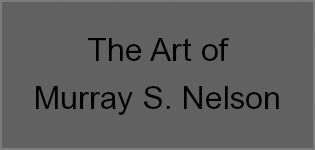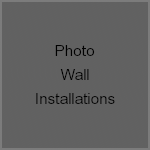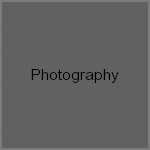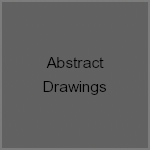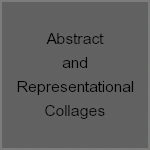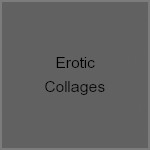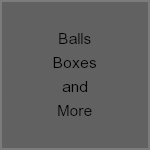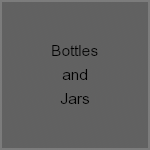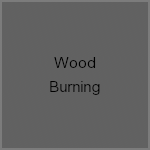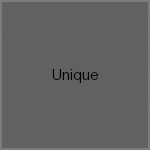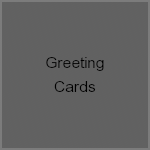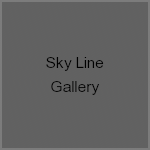
Fetish Box 2 (detail)
Push Pinned Objects - 2012
Over the last thirty years, when people first view my artwork there is one question that seems to dominate their thinking. It goes something like this – “Why do you use all those push pins?” Almost without fail, this leads to a second question which goes something like, “Why don't you use frames?” or “Why don’t you just glue the photos to matte boards or push pin the collage to a board or something?”
The answer is obvious to me. The work belongs on the wall. The process of installing the piece is an important element of the work. Usually, many viewers need a more detailed explanation than the simple one I have just suggested.
While working toward a degree in painting and drawing at the University of Minnesota (BFA, 1974), I quickly came to a place where I wanted to discard the usual framing routine of artwork. I wanted my work to interact with the wall and space of the room in a more direct and purposeful manner. A decision thirty years ago to use multiple aluminum push pins to install drawings in the “Wall Drawing Series” or photographs in the “Photo Wall Series” has informed all of my work since.
During 1978, the last year I spent in Minneapolis before moving to San Francisco, my mind left the flat space of the wall and the confined space of a room to a much larger realm. One day, while at my architectural silk screening job, I looked out the window at a perfectly clear blue sky and thought of a “Sky Line”, a straight line “drawn” in the sky, seeming to hang there without support or attached equipment; a line of given dimensions over random or specified locations around the planet Earth. I needed to come up with an anti-gravity machine! The first “Sky Line” drawings became silk screened invitations to a showing of recent work at my studio in late 1978.
In San Francisco, I continued to work on collages, began doing studies, and completed the first drawing in a series I call “Wall Drawings”. The first work in the series was “Sky Line Wall Drawing”, dedicated to Weather Report. The drawing consisted of one hundred pieces of white drawing paper. Each piece of paper was cut to five by five inch squares with four inch squares drawn on each paper. On each paper within the square I drew a single line, the Sky Line. With four hundred aluminum push pins, I installed the one hundred drawings on the wall of my studio in the form of a fifty inch square. The repeated lines of the drawing floated and moved across the paper. I was delighted with how the whole drawing could look as if it was floating on the wall. In different light the work sank into the wall. I noticed immediately that the paper and the push pins reflected light and colors in a painterly and positive way which I had not planned or anticipated.
For the next few days I spent as much time as possible looking at the work from every direction and distance possible. I looked at it in bright direct daylight and in the dark of night. I looked with my eyes wide open and with them squinting near shut. I did not need to do anything else with it or to it, just look at it. I especially liked to look at the installation at night with the lights off. Any faint or bright light coming in the window would shine on the aluminum push pins giving them the appearance of hovering above the paper and wall. The light of passing cars would create moving shadows of the push pins dancing around and across the paper. The various lighting displays would change the entire work and its relation to the wall and the rest of the space in the room.
A couple nights after installation, I was sitting about six feet directly across from the drawing looking at it with the lights off. A car pulled up outside and parked for a short while as people said good night to each other and laughed about their evening. The red light from the tail lights shone into the room and touched on the flat head of one single push pin out of four hundred push pins. That one push pin sent a bright beam of red light straight into my eyeball and I knew instantly that I had to stock up on push pins.
I had already come to love chance moments that can happen while interacting with a work of art. That moment stands out and stays with me when I leave the gallery, museum, or whatever site I have been visiting. The beaming red push pin was the first such moment I had experienced with my own work. The entire installation changed for that moment, the same way a dab of one color on a painting can change the whole painting.
Over the years an evolution in my work has occurred as I exchanged frames for direct contact with the wall - as a mural – as a sculpture – through the use of push pins. This natural evolution continued into push-pinning objects such as balls, boxes, books, and fruit, and then to putting the push pins inside the work as in the “Plastic Box Project” and the “Recycled Bottles and Jars Project”. Further evolution by chance occurs when the viewer handles and rearranges the art. This is an intended method of interacting with some of the pieces.
These galleries are a representative sample of various aspects of my work. As with many things on the Internet, it is a huge step removed from experiential real life. However, it is an exciting new evolution in presenting my work. New work and new photos of older work will be posted in the future. Please enjoy these galleries and thank you for visiting.
August 2010
Murray S. Nelson - Oakland, California
The answer is obvious to me. The work belongs on the wall. The process of installing the piece is an important element of the work. Usually, many viewers need a more detailed explanation than the simple one I have just suggested.
While working toward a degree in painting and drawing at the University of Minnesota (BFA, 1974), I quickly came to a place where I wanted to discard the usual framing routine of artwork. I wanted my work to interact with the wall and space of the room in a more direct and purposeful manner. A decision thirty years ago to use multiple aluminum push pins to install drawings in the “Wall Drawing Series” or photographs in the “Photo Wall Series” has informed all of my work since.
During 1978, the last year I spent in Minneapolis before moving to San Francisco, my mind left the flat space of the wall and the confined space of a room to a much larger realm. One day, while at my architectural silk screening job, I looked out the window at a perfectly clear blue sky and thought of a “Sky Line”, a straight line “drawn” in the sky, seeming to hang there without support or attached equipment; a line of given dimensions over random or specified locations around the planet Earth. I needed to come up with an anti-gravity machine! The first “Sky Line” drawings became silk screened invitations to a showing of recent work at my studio in late 1978.
In San Francisco, I continued to work on collages, began doing studies, and completed the first drawing in a series I call “Wall Drawings”. The first work in the series was “Sky Line Wall Drawing”, dedicated to Weather Report. The drawing consisted of one hundred pieces of white drawing paper. Each piece of paper was cut to five by five inch squares with four inch squares drawn on each paper. On each paper within the square I drew a single line, the Sky Line. With four hundred aluminum push pins, I installed the one hundred drawings on the wall of my studio in the form of a fifty inch square. The repeated lines of the drawing floated and moved across the paper. I was delighted with how the whole drawing could look as if it was floating on the wall. In different light the work sank into the wall. I noticed immediately that the paper and the push pins reflected light and colors in a painterly and positive way which I had not planned or anticipated.
For the next few days I spent as much time as possible looking at the work from every direction and distance possible. I looked at it in bright direct daylight and in the dark of night. I looked with my eyes wide open and with them squinting near shut. I did not need to do anything else with it or to it, just look at it. I especially liked to look at the installation at night with the lights off. Any faint or bright light coming in the window would shine on the aluminum push pins giving them the appearance of hovering above the paper and wall. The light of passing cars would create moving shadows of the push pins dancing around and across the paper. The various lighting displays would change the entire work and its relation to the wall and the rest of the space in the room.
A couple nights after installation, I was sitting about six feet directly across from the drawing looking at it with the lights off. A car pulled up outside and parked for a short while as people said good night to each other and laughed about their evening. The red light from the tail lights shone into the room and touched on the flat head of one single push pin out of four hundred push pins. That one push pin sent a bright beam of red light straight into my eyeball and I knew instantly that I had to stock up on push pins.
I had already come to love chance moments that can happen while interacting with a work of art. That moment stands out and stays with me when I leave the gallery, museum, or whatever site I have been visiting. The beaming red push pin was the first such moment I had experienced with my own work. The entire installation changed for that moment, the same way a dab of one color on a painting can change the whole painting.
Over the years an evolution in my work has occurred as I exchanged frames for direct contact with the wall - as a mural – as a sculpture – through the use of push pins. This natural evolution continued into push-pinning objects such as balls, boxes, books, and fruit, and then to putting the push pins inside the work as in the “Plastic Box Project” and the “Recycled Bottles and Jars Project”. Further evolution by chance occurs when the viewer handles and rearranges the art. This is an intended method of interacting with some of the pieces.
These galleries are a representative sample of various aspects of my work. As with many things on the Internet, it is a huge step removed from experiential real life. However, it is an exciting new evolution in presenting my work. New work and new photos of older work will be posted in the future. Please enjoy these galleries and thank you for visiting.
August 2010
Murray S. Nelson - Oakland, California
